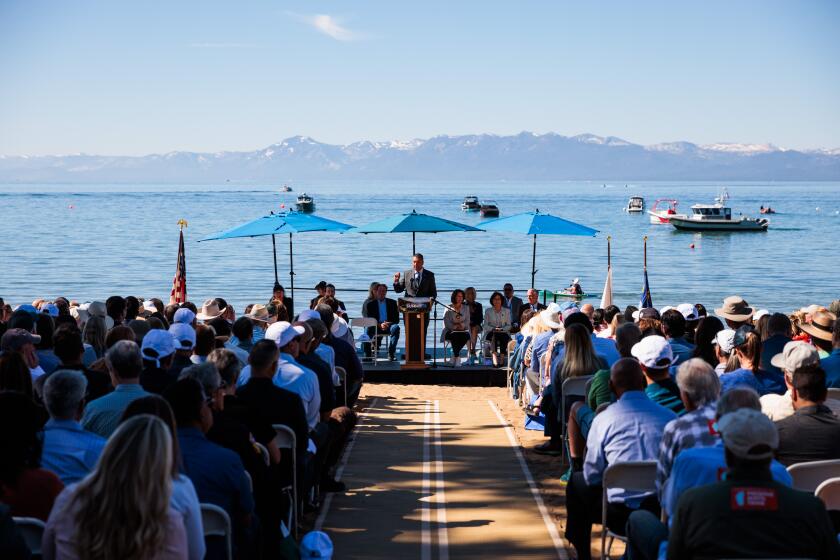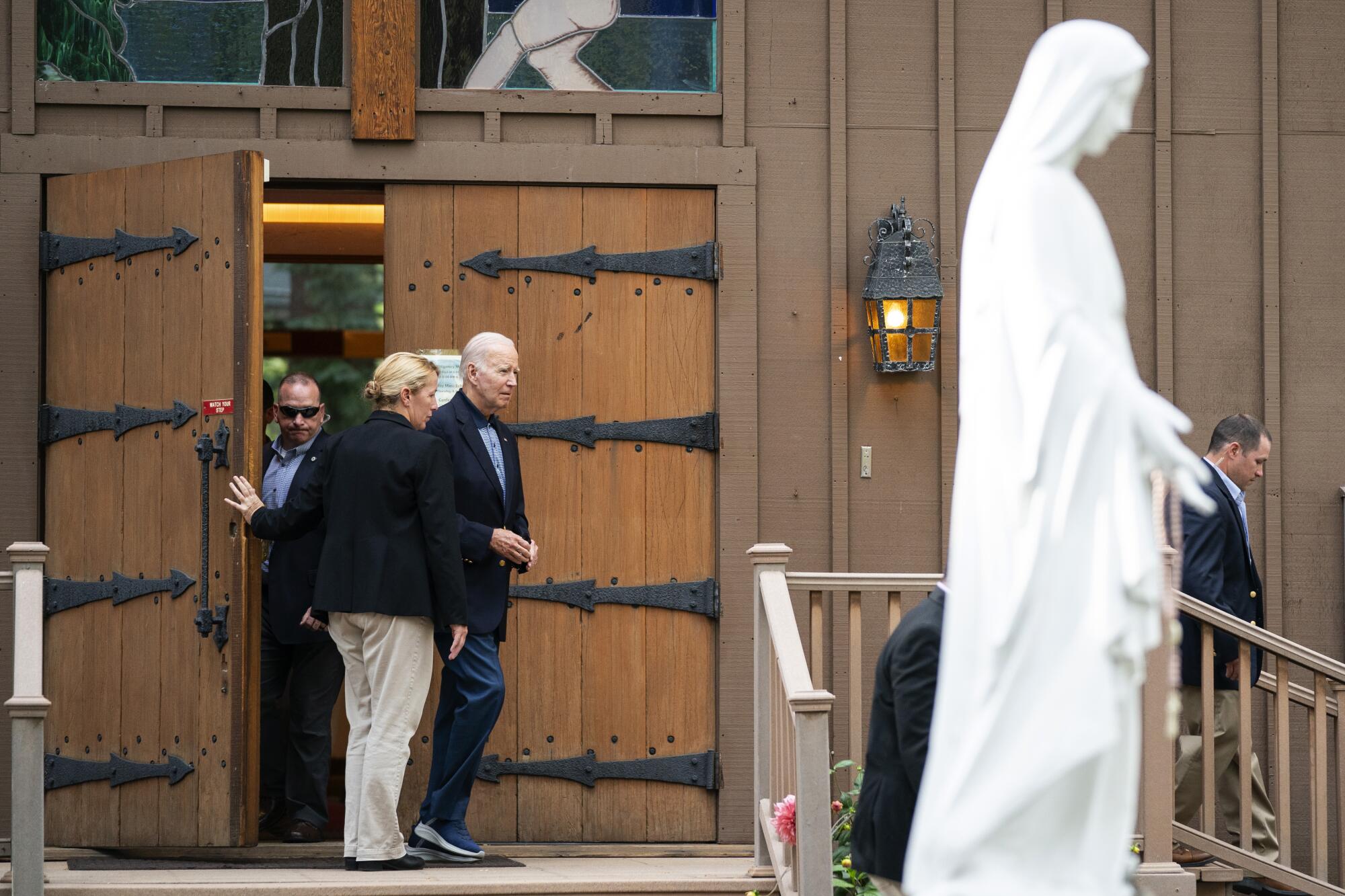
- Share via
KINGS BEACH, Calif. — Strolling on the Lake of the Sky Trail, U.S. Forest Service officer Daniel Cressy marveled at the wildlife that first attracted him to Lake Tahoe.
A bald eagle nestled into the top of a Jeffrey Pine looking out over the shimmering blue of North America’s largest alpine lake, and rising in the distance was Mt. Tallac, a 9,739-foot peak that he’s skied many times.
Then, along the path, Cressy spotted a tree with “J&B” carved into its trunk.
“Folks feel like they got to leave their mark, whether that’s scratching on a tree or painting on a facility or leaving trash, ” Cressy said.
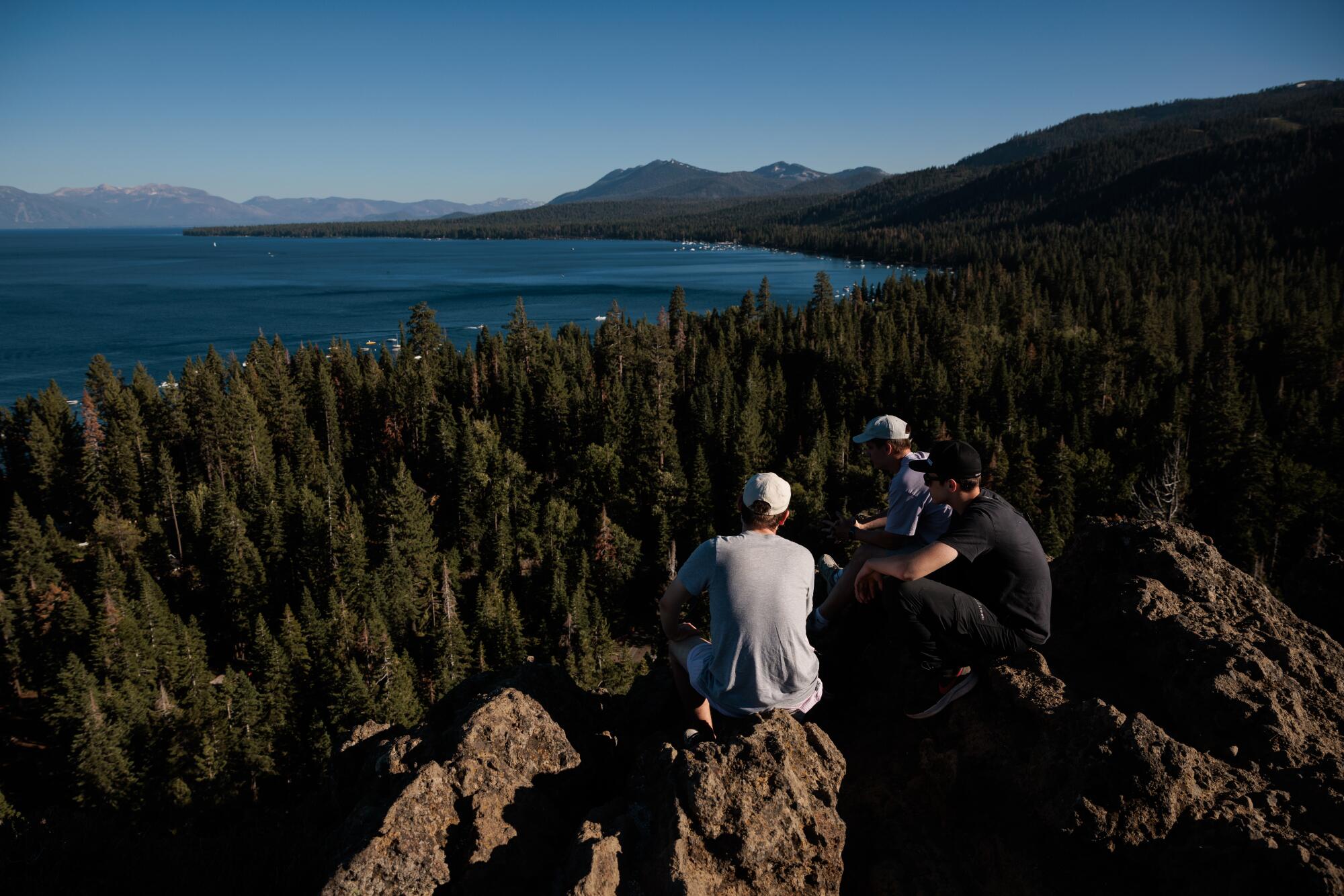
That small stain of civilization epitomized the growing tension between the millions of tourists who provide economic sustenance to the High Sierra paradise and the effort to preserve the natural splendor that draws them, a clash that came into sharp focus this week with a weeklong visit from world’s most powerful tourist, President Biden.
While Biden and his family are vacationing at the three-acre $15-million home of environmentalist and former Democratic presidential primary foe Tom Steyer, the Lake Tahoe community is swept up in a conversation about how to make the mountain community straddling the California-Nevada border an inviting — but also sustainable — place to live and visit.

“We need to be more proactive. We need to be prepared for that increase in visitation. So rather than stand there and go, ‘Oh, my gosh, where did all these people come from?’ We’re trying to make a plan,” said Amy Berry, chief executive of the Tahoe Fund.
Biden has been staying on the Nevada side of the lake with his family and, except for a quick trip to Our Lady of Tahoe Catholic Church in Zephyr Cove, the Biden clan has stayed aroundSteyer’s shoreside home. The gated community includes a “private, 9-hole mountain golf course with a pro shop, clubhouse and seasonal restaurant” along with unfettered access to the water.
Like much of the pioneering roots, Glenbrook — the community where Biden has been staying since last Saturday, save for a short trip earlier this week to Maui to meet with wildfire victims — started as a small settlement with a sawmill in the mid-19th century. During the later half the century, the region began to transition into a vacationing spot for wealthy San Franciscans and others, including Mark Twain.
The famed writer described in one essay how he “sailed and hunted and fished and danced all day, and I doctored my cough all night.”
Biden’s movements are less known — with officials saying little about what he and his family are doing while staying at Steyer’s home.
He did venture out Wednesday for a banana-blueberry smoothie and some fitness classes with his family at PeloDog — a Pilates and cycling studio in South Lake Tahoe. Along the drive, reporters saw curious onlookers waving at the motorcade; as it crawled past Stateline’s casinos, others held their phones out.
Standing in the fitness studio’s parking lot, Biden told reporters he planned to watch the GOP presidential primary debate Wednesday and had been monitoring reports about a downed Russian plane that may have been carrying the warlord Yvgeny Prigozhin, who coordinated a failed uprising against Russian leader Vladimir Putin.
“You may recall, when I was asked about this by you, I said I’d be careful what I rode in. I don’t know for a fact what happened, but I’m not surprised,” Biden said.
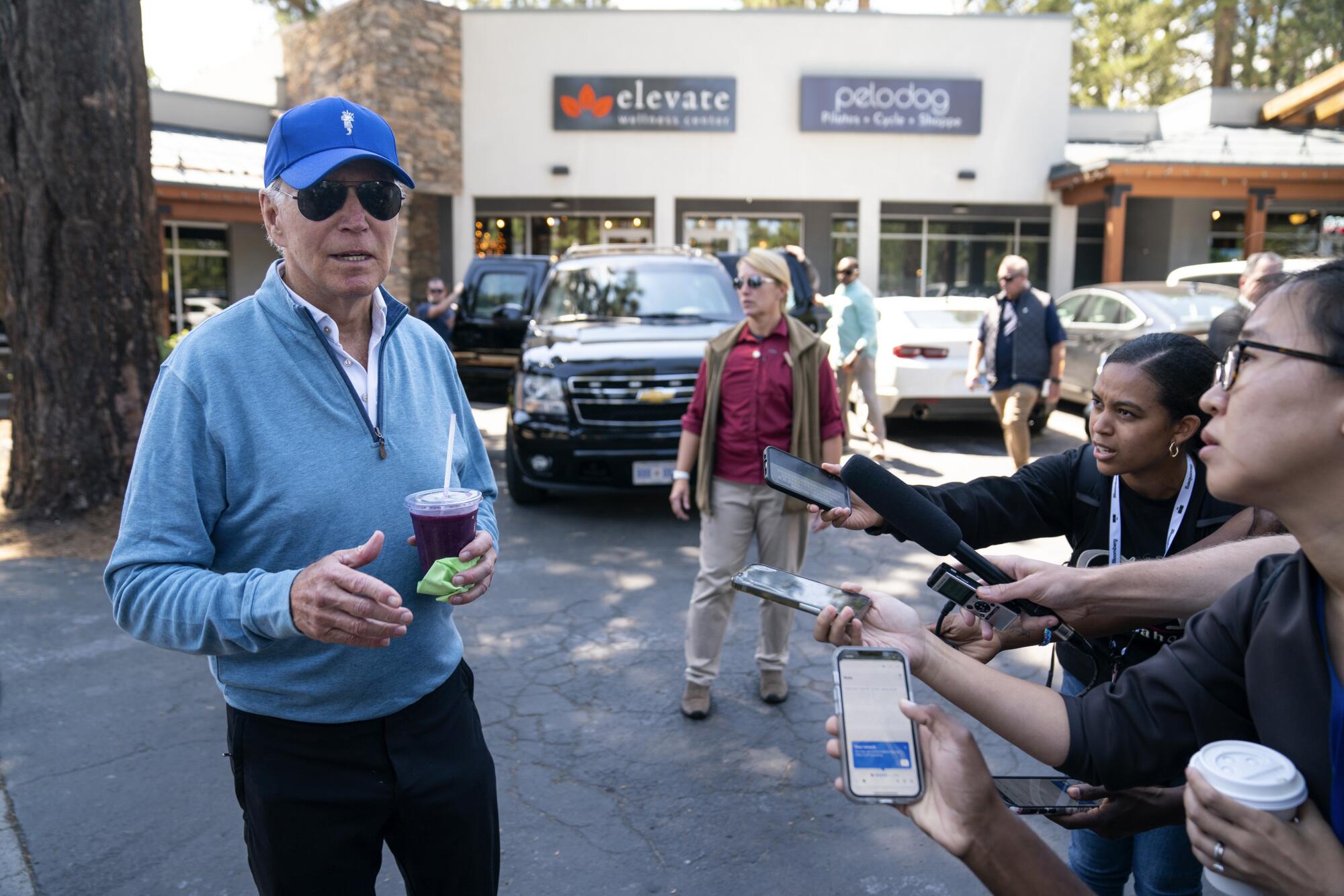
The president will be in town until Saturday, and his experience diverges sharply from the millions who flock to Tahoe by car and on busy weekends, sit in hours of traffic on the single road that circles the lake, fight for camping spots or pony up for a pricey hotel room.
Even though the lake’s waters are clearer than they’ve been in many years, beach parking clogs up. Trash is strewn along hiking trails, and graffiti scars trees and buildings.
Last year, the issues became so severe that prestigious Fodor’s Travel Guide listed the locale as a place to avoid, writing: “Lake Tahoe has a people problem.”The Fourth of July in recent years has resulted in viral images of beaches covered with trash, a sight which not only is painful for locals but impacts the lake. A record total of 8,559 pounds of trash was collected from six beaches this year.
Similarly a recent study found that the lake’s waters contain microplastic concentrations higher than those observed in ocean gyres — systems of ocean currents notorious for accumulating plastic waste.
A number of locals told The Times that the onset of the COVID-19 pandemic, when people flocked to the basin in search of a reprieve from stay-at-home orders, was the breaking point. The region’s roughly 50,000 residents were overwhelmed by the influx — particularly the thousands who stayed for extended periods, reducing the already short supply of housing in the area.
“I feel like COVID tested the system,” said Morgan Steel, executive director of the Tahoe Rim Trail Assn. “It exposed something just because there were a lot more people working remotely, but I don’t think any of these issues or changes wouldn’t have come up had COVID not happened.”
The pandemic simply exposed some pressure points faster, she said.
Steel moved to South Lake Tahoe to work ski patrol at Heavenly Resort and fell in love with the region. Her days regularly begin or end with a hike, mountain bike ride or, in the winter, a backcountry ski into the woods. This level of access to nature, and a community that cares about the environment is unmatched, she said.
She’s had peers move away because of the challenge of finding a place to live, and it’s made hiring staff more difficult.
“I know a lot of people who have left because they’re concerned about insuring their house against fires, or maybe it’s about the traffic,” she said. “Affordability is really a huge issue.”
A 1,000-person survey of Tahoe residents last year found that just “29% of residents agree that the positive benefits of tourism and recreation in the Tahoe region outweigh the negative impacts.” Visitation to the park was at its highest in 2019 with about 2.3 million individuals entering the basin. Last year it hovered around 2 million.
Steel and others said the surge during COVID led local leaders to come together and create a plan to help the region navigate the crush of visitors during the winter and summer.
This plan offered a road map for what needs to change in a region where intersecting lines of bureaucratic authority make it hard to know who is in charge. It wasn’t simply about keeping trails clean or reducing traffic — though that’s part of it — but also how to raise more funds to increase public transit and workforce housing in the area.
Tourism is “the largest industry here and not one that we can shift very easily. We’re never going to have manufacturing, for instance,” said Carol Chaplin, president and chief executive of the Lake Tahoe Visitors Authority, who serves on the committee that commissioned the report.
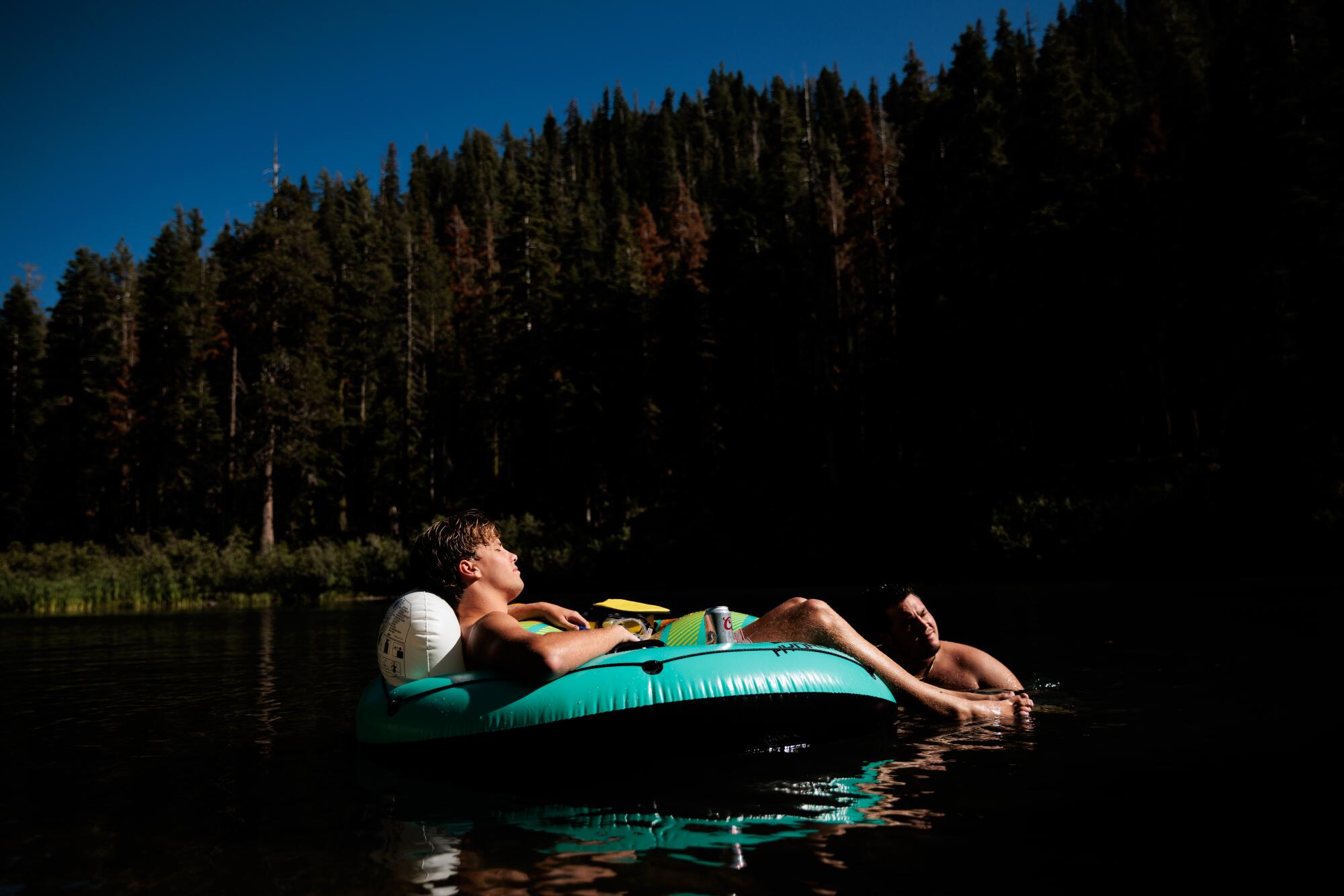
“We hear from our businesses: ‘Don’t tell people not to come. We need them here and we want them to be here.’ So it’s not just telling people to be respectful. It’s to help to guide them through what would make a difference when they come here and what would lessen their impact when they come here.”
The impact of visitors is evident everywhere. Deep in the woods alongside Fallen Leaf Lake, paper plates, plastic bags and remnants of a past party litter the area outside a portable toilet. Plastic and cigarette butts abound in the sands of Kings Beach, where just weeks ago elected officials from Nevada and California gathered to celebrate the work that’s being done to protect the Lake’s waters.
Sen. Dianne Feinstein, 90, missed a summit about Lake Tahoe’s health, which she helped start. Still her legacy and contributions to the region took centerstage.
The Truckee River’s water line remained lower than usual, meaning it wasn’t as bustling with people floating or fishing or swimming in its waters. Still, six tanned guys in their late teens and 20s lazed by the water drinking beer and contemplating the start of the school year being around the corner.
Jason Dukes watched two of his sons from a float as they sat with several of their friends. The Point Loma resident has been coming since his kids were young — ski trips in the winter and for weeks in the summer to relax by the beach.
“It’s gotten a lot more crowded in recent years,” he said. “The trash is everywhere and the towns around the lake are packed. “
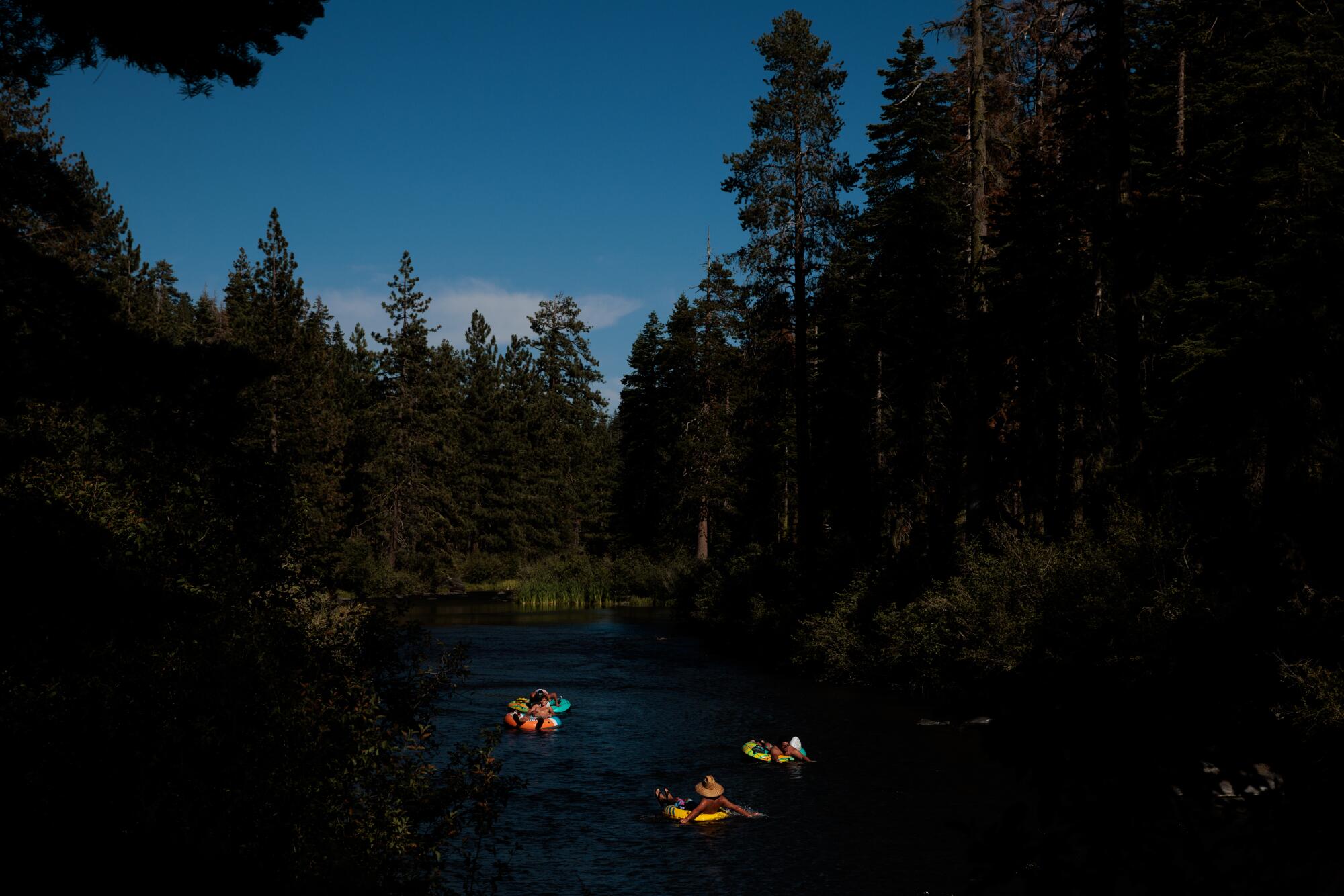
Farther north, across from Kings Beach, Alex Brambila waves at every customer as they enter or exit Las Panchitas — a Mexican restaurant where he first started work in the 1980s. The ample seating and tile-covered bar are a haven for locals and tourists alike, who flock for stuffed burritos and ever-flowing margaritas.
Brambila started as a dishwasher but now owns the joint and holds court behind the bar pouring shots for himself and friends while endlessly trying to keep a growing stack of cups clean as several servers scramble from table to table.
The native of Mexico owns a home blocks from the restaurant but feels the changes in his community every day. The crush of customers is not eased by the challenge of hiring staff. His head chef is struggling to find a home for his family that’s cheaper than the $3,000 they’re currently paying.
He’s watched friends move to cheaper places like Reno. His wife sometimes suggests they do the same. Still, when he looks out and sees the lake, it’s intoxicating.
“I love it here. There’s no more beautiful place.”
More to Read
Sign up for Essential California
The most important California stories and recommendations in your inbox every morning.
You may occasionally receive promotional content from the Los Angeles Times.
